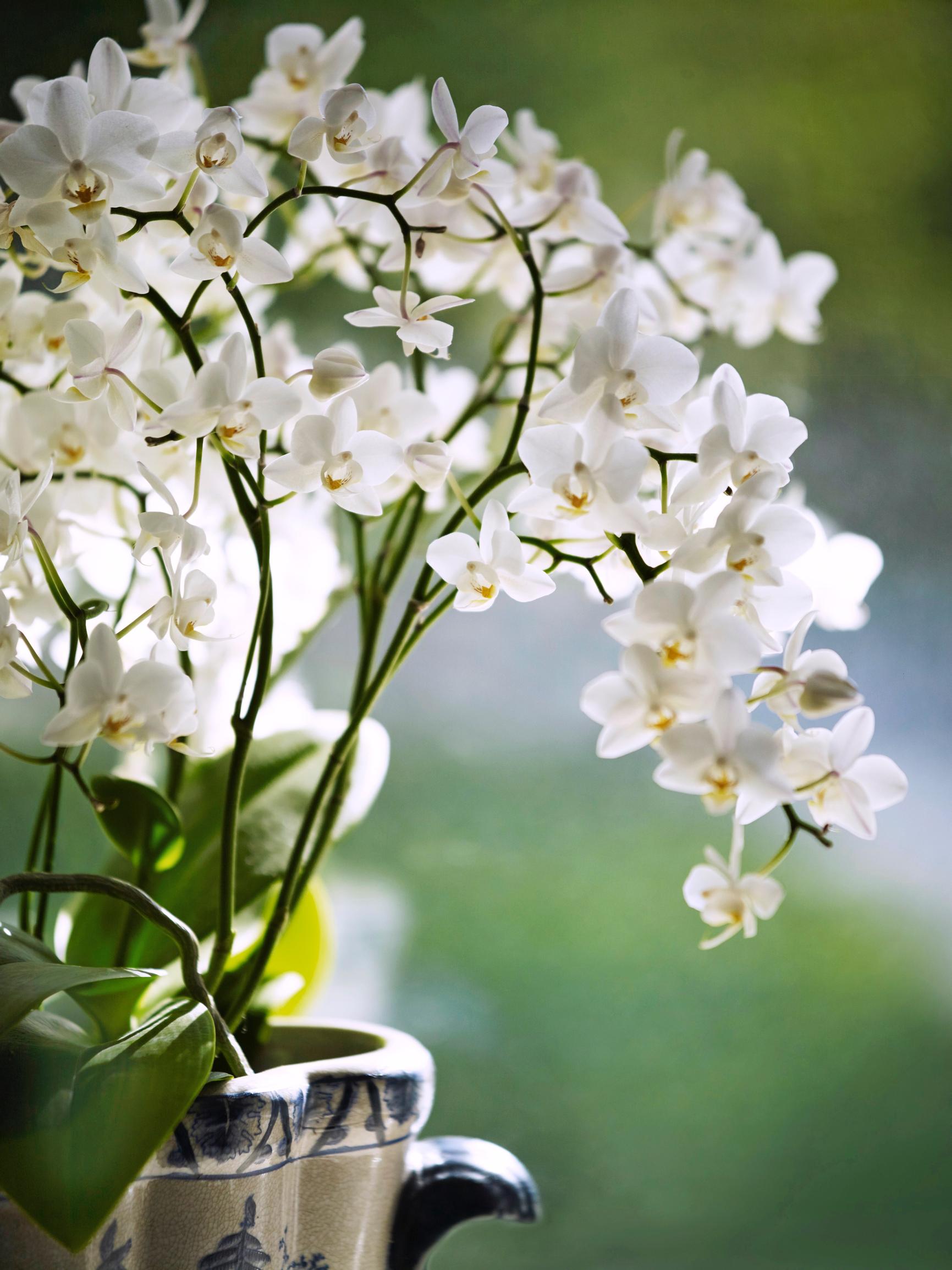
How to care for orchids and succeed in growing these exotic beauties
Orchids are stunning plants that need proper care to thrive. Learn how to care for orchids with our instructions and tips, and discover the perfect species to add to your collection.
Orchids’ marvelous flowers look as if they’ve come straight from paradise. Their exotic appearance might make you question whether they can thrive on a home windowsill. However, there are many easy-care beauties among orchids. Choose from these and welcome your own charming orchid.
Explore different types of orchids before bringing one home
Find out about your orchid’s native living conditions and the plant’s requirements. Orchids that grow as epiphytes (air plants) require a different growing medium mix than lithophytes or terrestrial orchids. Most orchid species or hybrids are epiphytes, such as the popular Phalaenopsis, moth orchids. Venus slipper orchids (Paphiopedilum) grow on the ground, but not in typical soil; instead, they grow in litter or among moss.





How to care for orchids
Choosing the perfect spot for your orchid
Place orchids near other houseplants to improve humidity. A plant group creates a microclimate more favorable than the surrounding air. Especially in winter, move orchids closer to the window. There is little light at the Finnish latitude. In early spring, be cautious of too strong sunlight; the leaves burn easily. Orchids dislike drafts, tobacco smoke, and fruits or Christmas trees that emit ethylene.
Watering your orchid
You should not overwater your orchid, as the delicate roots rot easily. Ensure there is no standing water in the saucer. Water your orchid more sparingly in winter when there is less light for photosynthesis. You can also water your orchid by quickly immersing the entire pot into a bucket of water and then immediately lifting it out to drain. This dipping can be done once a week, though in winter it may be necessary to do it less frequently.
Fertilizing your orchid
Fertilize from the end of February to the end of September with a diluted orchid-specific fertilizer solution. There are specific fertilizers formulated for orchids, which provide the right balance of nutrients. You can also use well-rotted horse manure or chicken manure. Horn shavings are also a good organic fertilizer that release nutrients slowly. By fertilizing properly, you give your orchid the strength to bloom again.

Misting your orchid
In winter especially, dry indoor air can be detrimental to orchids. In the mornings, mist your orchids with warm tap water that has stood for about a day, or use rainwater. You can also place an inverted, smaller pot in the bottom of the cachepot or growing tray, on which the plant can stand. Keep water at the bottom of the cachepot. This way, you increase the humidity around the plant.
Orchid problems
Monitor your orchids for pests. If you see webbing on the plant, it is afflicted by spider mites. If there is white fluff on the undersides of the leaves, mealybugs have attacked the plant. Both are troublesome pests for which various pest control products are available. Use them to repel pests and repeat treatments according to the instructions.

Materials for an epiphyte’s growing medium
For epiphytes, the growing medium should be changed when the old one starts to decompose. Every experienced orchid grower has their own substrate recipes. The following materials are commonly used in the growing medium:
- Pieces of pine bark. They are the most important ingredient in the mix. Adjust the size of the pieces to the size of the plant and its root system. Some species thrive better in baskets or on cork oak bark than in pots.
- Pieces of wood charcoal.
- Live tips of sphagnum moss.
- Pieces of hare’s-tail cottongrass stems.
- Pieces of styrofoam.
- Pieces of common polypody roots. You can also try roots of other fern species.
- Dried leaves of hardwood trees. However, avoid using oak leaves, which contain tannins.
- Perlite, sometimes also lightweight aggregate.


